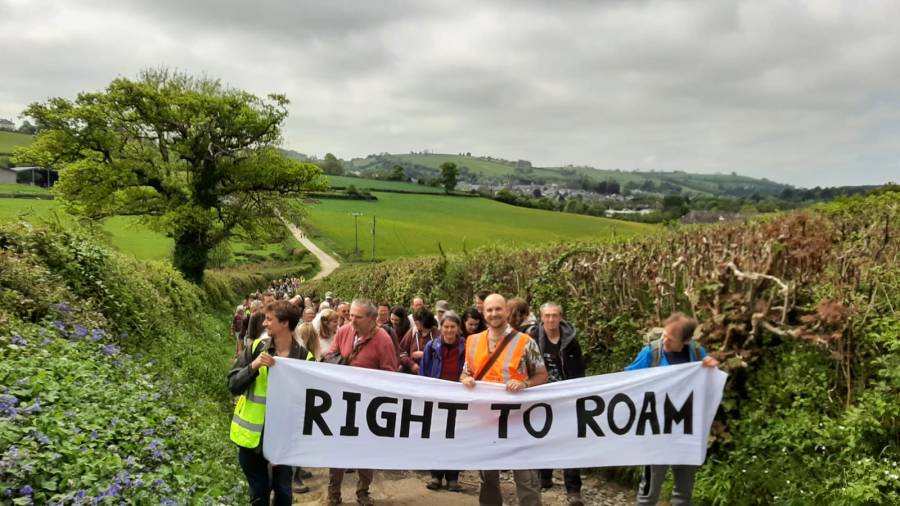A series of protests this spring have highlighted the fact that 92% of England is off limits to the public and huge sections of the population are under-represented in the countryside. Hanna Lindon looks at the grassroots revival of the ‘right to roam’ movement.
If there was any idea that the struggle for access in England had been ‘won’ and was now a thing of the past, the recent revival of the right to roam movement has shown that it is still very much alive.
A host of protests, trespasses and controversies this spring have highlighted the legal and social problems that continue to exist in a country where 92% of the land is off limits to the public, 97% of rivers are also prohibited, and large sections of the population are under-represented in the countryside.
Campaigning around these issues is nothing new, but this year has seen a significant step up in the intensity of grassroots activity, with events and trespasses across the country attended by hundreds of people.
On Sunday April 24, the 90th anniversary of the Kinder Trespass, more than 500 walkers met on the slopes of Kinder Scout for one of the largest gatherings of black people and people of colour in the history of rural access campaigning.
The event was called ‘Kinder in Colour’, and its aim was to highlight the social and economic barriers people from black, Asian and minority ethnic backgrounds only account for about 1% of visitors to national parks, despite making up 14% of the population.
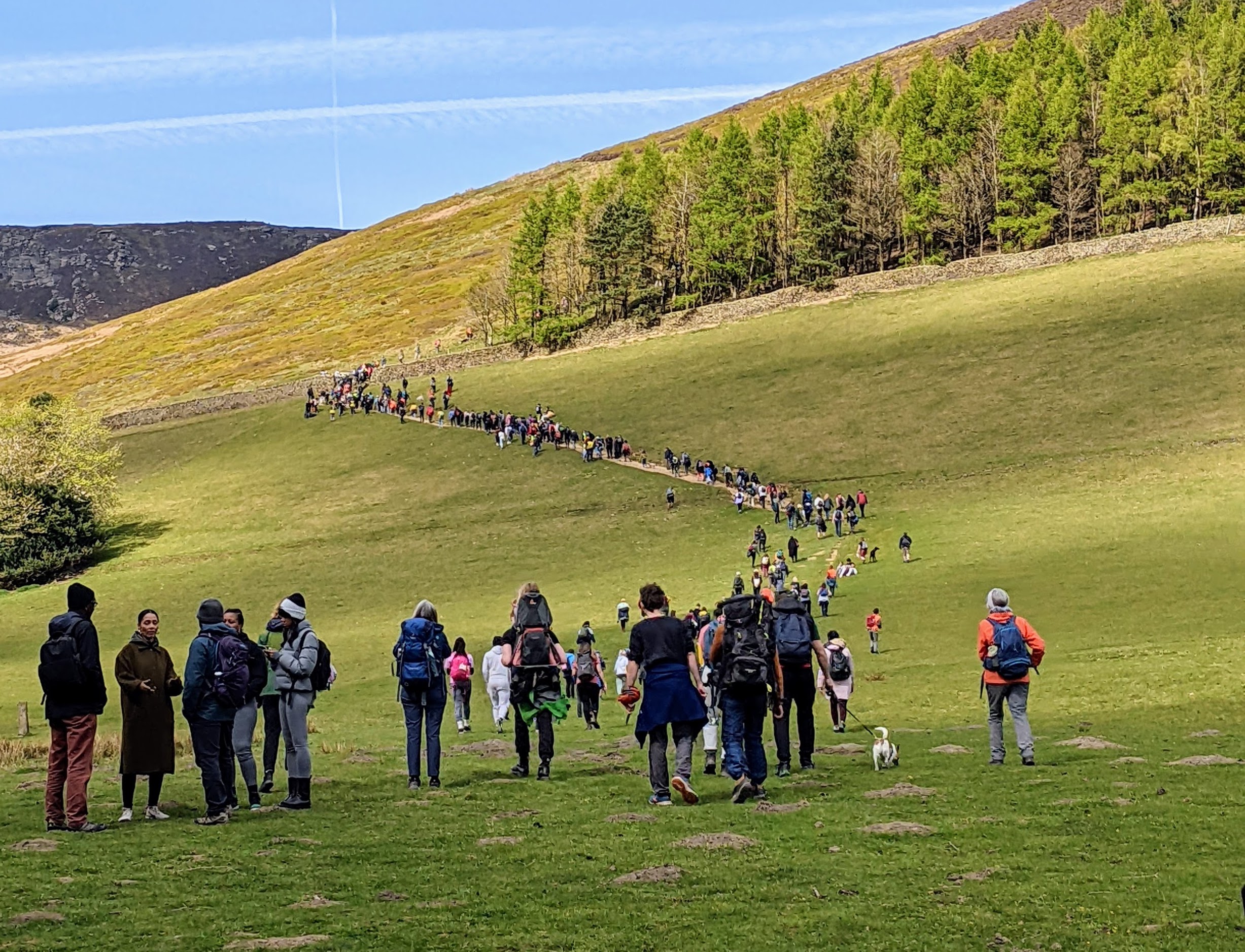
Walkers on the ‘Kinder in Colour’ event make their way up Kinder Scout. Photo: Jon Moses / Right to Roam
“It was beautiful,” says co-organiser Nadia Shaikh. “The turnout was good – about 300 people of colour came, which is huge for a walk – and the atmosphere was lovely. There’s been a lot already happening around representation for black and people of colour outdoors; the right to roam element highlighted wider land justice issues. What’s happening in our landscapes that means being outdoors in nature is not something we fundamentally all do?”
‘A place of business’
As activists gathered for Kinder in Colour, a related conversation was taking place in Westminster. Campaigners, championed by Green MP Caroline Lucas, were questioning why a report commissioned last year by Lord Agnew to review public access to nature had been quashed. The review had asked respondents for ‘radical, joined-up thinking’ to achieve a ‘quantum shift in how our society supports people to access and engage with the outdoors’.
Questioned about the Agnew report’s suppression, leader of the house Mark Spencer said: “I think we are blessed in this country with hundreds of thousands of miles of public footpath to allow people to access the countryside. We have to recognise the countryside is not just a place of leisure, but it is also a place of business and food production.”
But Lucas described the response as ‘utterly feeble’. “The Government can’t commission a review, allow the research to go ahead and then simply quash it when it fears it won’t like the outcome,” she told The Great Outdoors. “When the public has a legal right of access to only 8% of land in England, the public are crying out for greater access to nature and an expansion of the right to roam. If independent, expert evidence is backing calls for this expansion, we need to see it – Ministers can’t keep sticking fingers in their ears.”
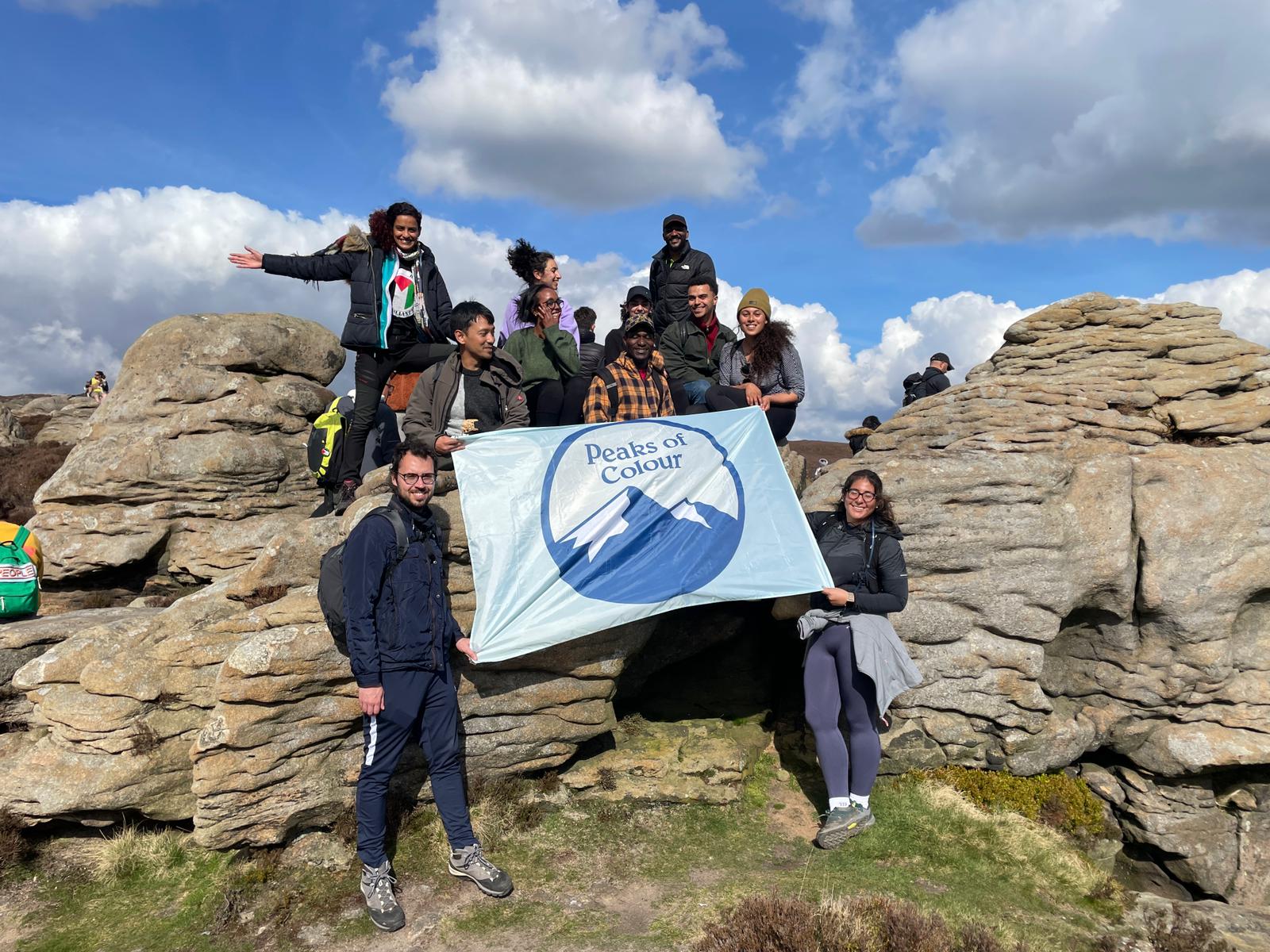
‘Kinder in Colour’ participants on Ringing Roger, Kinder Scout. Photo: Evie Muir
Right to roam revived
Kinder in Colour is just the latest manifestation of a growing movement to create space for people of colour to safely enjoy the outdoors together. Just 39% of people from BPOC backgrounds live within a five-minute walk of green space compared to 58% of white people, and they make up only 1% of visitors to our national parks. But high-profile campaigners and outdoors groups such as Land in Our Names, Black Girls Hike and Muslim Hikers – together with individual influencers – are working hard to change those statistics.
Their efforts are part of a broader fight to gain more public access to green space. The Right to Roam movement, launched last year by Nick Hayes and Guy Shrubsole, has already organised a series of well-publicised trespass events based on the premise that public access can benefit the countryside as well as the other way round. The most recent, at the beginning of May, saw around 200 activists spend the day in the Duke of Somerset’s pheasant shoot woods near Totnes. Their aim was to highlight the fact that 92% of Britain is currently off-limits to the general public.
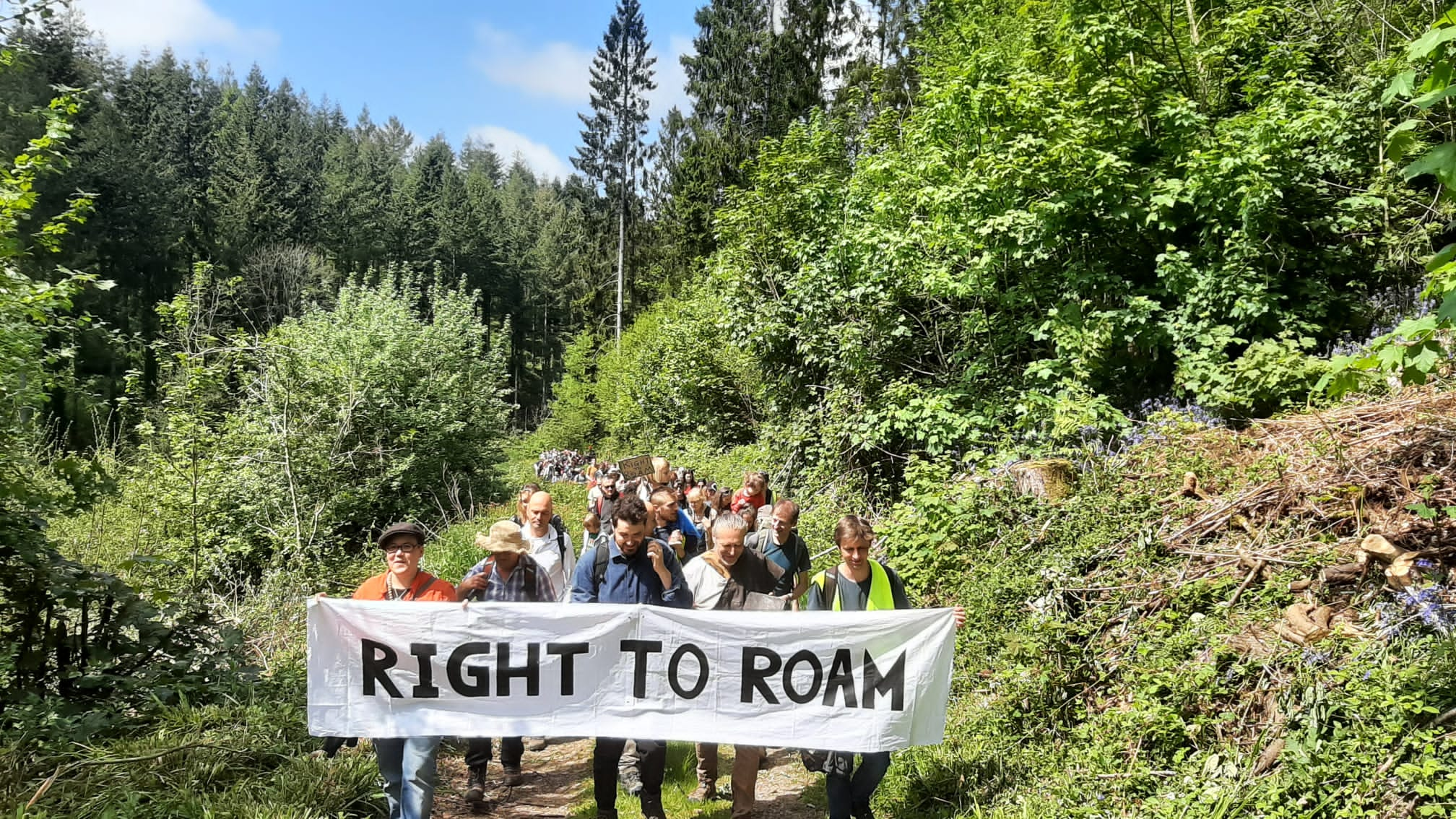
The ‘Totnes mass trespass’ saw around 200 people walk through the Duke of Somerset’s pheasant woods. Photo: Right to Roam
“We’re leading with botany, with foraging, with water pollution sampling, with citizen science,” says Hayes. “We want to say: look at what the public could be doing. On a basic level, too, the only way we can encourage a love of nature is to allow people to be educated within it. If you’ve never heard a nightingale sing, you don’t care that they’ve seen a 90% decline in England in the last 40 years”
As well as organising group trespasses, the campaign is calling for people to ‘win greater public access to the English countryside by trespassing on it’. That’s the premise of Hayes’ new book, The Trespasser’s Companion, a ‘practical’ guide for would-be trespassers.
“The most important thing about the book is the associated website, where we’re asking people to research their local area, trespass on it and then upload those trespasses,” he says. “We’re trying to de-centralise the campaign and ask people to take an active interest in the land they’re sold out of.”
It isn’t just walkers who are spearheading the new access movement. British Canoeing are calling for rights to access English rivers, just 4% of which are currently open for public enjoyment. Like the Right to Roam campaign, BC is emphasising the potential benefits to the countryside that could accompany increased access rights. It plans to start an initiative this summer to clean up rivers, including litter picking in some areas. If rivers were accessible said BC’s campaign manager Ben Seal, “just think of the amount of people who would then be engaged and care for the health of the river”.
Path to change
Despite the growing interest in outdoors recreation post-COVID and some promising campaigns such as Kinder in Colour and Right to Roam, some access organisations have expressed frustration at the lack of government action on the issue.
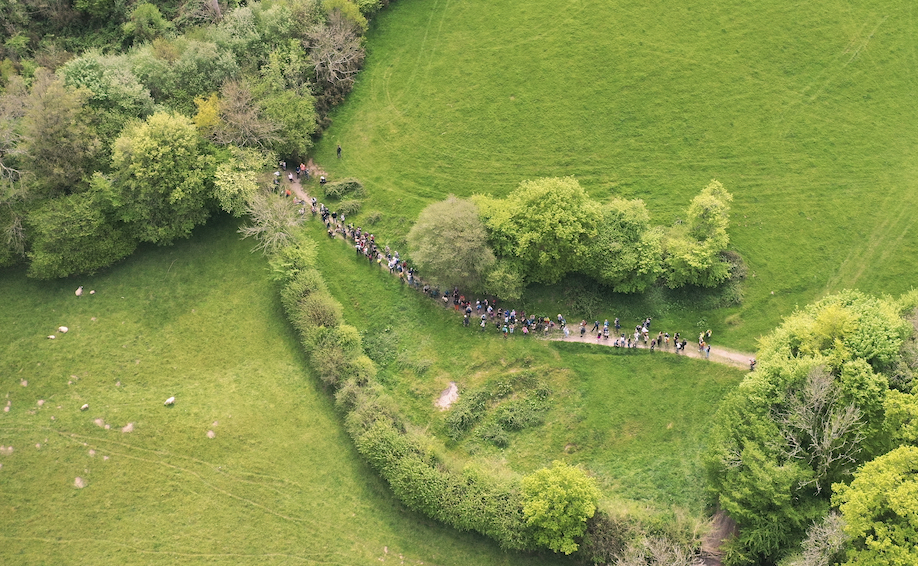
Walkers on the Totnes trespass. Photo: Right to Roam
“Obviously we are very disappointed for lots of reasons,” said the British Mountaineering Council’s (BMC) Dr Catherine Flitcroft in response to the shelving of the Agnew report. “Most notably that the government has no desire to improve access or recreational opportunities. No real commitments are set out in future farm payments – the obvious avenue at the moment – and the sector does feel like it’s knocking at a closed door. It’s very frustrating indeed [that this has happened] despite huge lobbying efforts from the BMC, the Ramblers, OSS and British Canoeing.”
Despite an unresponsive government, however, there’s general agreement that the campaign for greater access to the countryside is gaining traction. “It is getting through to the public,” says Hayes. All we need is the conversation – an open, honest conversation about it.”
The media attention that recent campaigns have received is also viewed as promising by Hayes and by campaigners for the Ramblers.
“Lots of journalists wrote stories recently about the 90th anniversary of the Kinder Scout Trespass which helpfully highlighted current inequalities in access to nature, and our limited right to roam across England and Wales,” says James MacColl, Head of Policy, Advocacy and Campaigns for the Ramblers. “We need to keep pressing for change.”

